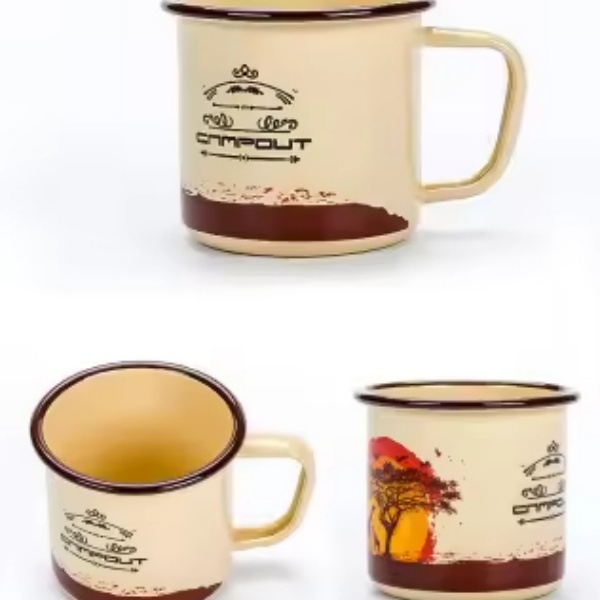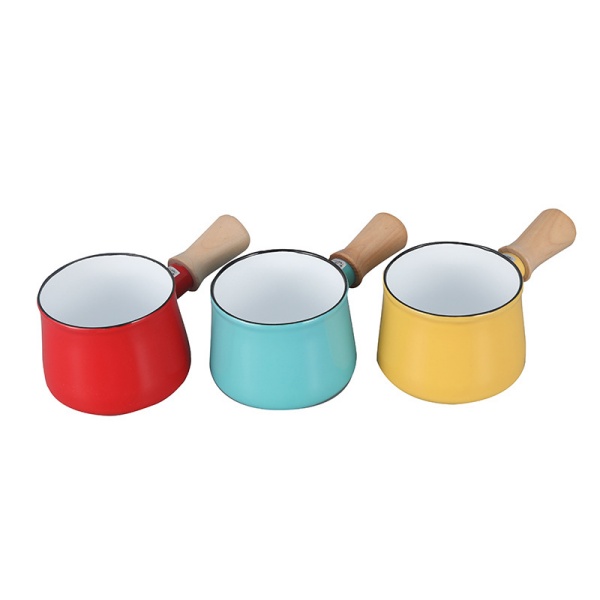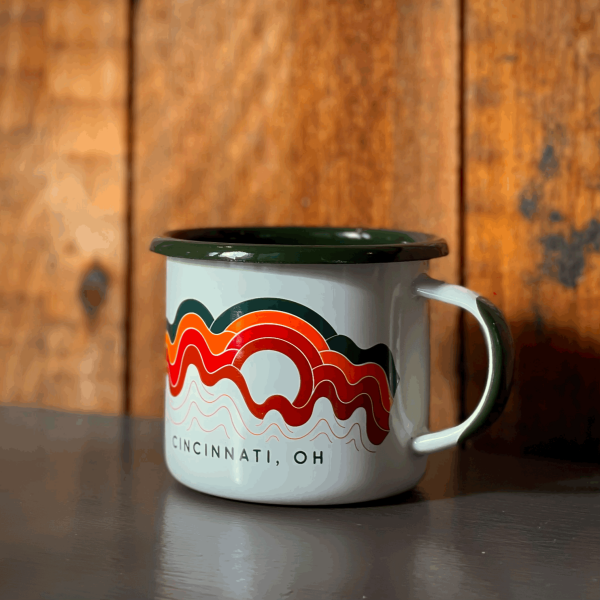Enamelware, a brilliant part of Chinese traditional craftsmanship, has a long history. The creation of an enamel mug is a complex and delicate process that combines artistry with skilled craftsmanship.
Step 1: Preparing the Metal Base
The process begins with choosing a suitable metal base, usually made of iron or steel. The metal is cut into the appropriate shape and size according to the design of the mug. This base will provide the structure and durability to the final product. Workers use precision cutting tools to ensure that the edges are smooth and the dimensions are accurate.
Step 2: Shaping the Mug
The cut - metal pieces are then formed into the shape of a mug. This is often done through a process of stamping and pressing. Large hydraulic presses are used to mold the metal into the characteristic rounded body and handle of the mug. The shaping process requires careful control to ensure that the mug has a uniform thickness and a pleasing appearance.
Step 3: Surface Treatment
Before applying the enamel, the metal surface needs to be thoroughly cleaned and treated. This involves degreasing to remove any oil or dirt, followed by acid - washing to etch the surface slightly. This etching helps the enamel to adhere better to the metal. After the treatment, the metal base is rinsed thoroughly and dried.
Step 4: Applying the Enamel
Enamel is a mixture of glass - like substances, metal oxides, and pigments. The enamel powder is first mixed with a liquid binder to form a paste. This paste is then applied to the metal surface. There are several methods of application, such as dipping, spraying, or brushing. Dipping is a common method for mugs, as it ensures an even coating. Workers must be careful to apply the enamel evenly to avoid thick or thin spots, which could affect the final appearance and quality.
Step 5: Firing
After the enamel is applied, the mug is placed in a high - temperature furnace for firing. The firing process is crucial as it fuses the enamel to the metal. The temperature in the furnace usually reaches between 800 - 900 degrees Celsius. During firing, the enamel melts and forms a smooth, hard, and glossy surface. The mug is carefully monitored during firing to ensure that the enamel is properly fused without any cracks or bubbles.
Step 6: Finishing Touches
Once the mug has cooled down after firing, it may go through some finishing processes. This could include polishing the surface to enhance its shine, inspecting for any flaws, and adding additional decorative elements if desired. The final product is a beautiful and durable enamel mug, a combination of traditional Chinese craftsmanship and functionality.











